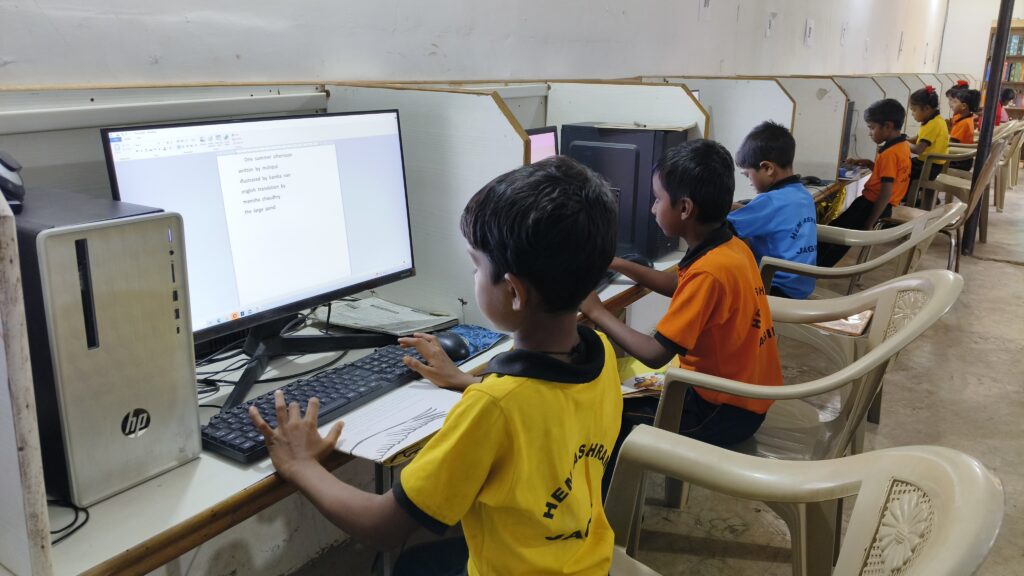What if we told you that world-class education doesn’t need to come with world-class pricing? In this powerful conversation, Dr. Malpani speaks with Lakshmi, an education NGO founder, to break the myth that only rich families can afford quality learning. Discover how AI-powered learning pods are helping children across India access personalised, engaging education for just ₹199 a month—no school fees, no tuitions, just smarter solutions driven by technology and community.

Lakshmi ( Education NGO founder) : Dr. Malpani, I’ve been reading about these digital learning pods and AI tutors, and I think the idea is brilliant. But I have to be realistic. Most Indians are poor. Most have a difficulty making ends meet, let alone buy a computer. Isn’t this model only for rich families?
Dr. Malpani: I hear that concern all the time, Lakshmi—and I want to challenge that assumption head-on. In fact, this model was created precisely for poor families. You’re right that poor families often end up with poor education because that’s all they can afford. But that’s exactly what we’re here to change.
Lakshmi: But how? Government schools are free, yes, but they don’t always deliver. And private schools are out of reach.
Dr. Malpani: Absolutely. The tragedy is that the children who need the most support—bright, curious kids from under-resourced homes—are stuck with the worst learning environments. But what if I told you that a high-quality, world-class education is now possible for as little as ₹199 per month per child?
Lakshmi (surprised): ₹199? That’s less than what parents spend on mobile recharge. How is that even possible?
Dr. Malpani: It’s because of how we’ve designed the model. Instead of one device per child, we focus on shared access. In our community microschools, or digital learning pods, one PC can be used by 10 students every day. Each child gets two focused hours of personalized learning, guided by an AI-powered tutor from Eklavya.io, which adapts to their pace, strengths, and learning gaps.
Lakshmi: But won’t they just get distracted on the computer?
Dr. Malpani: That’s a valid concern—but that’s why we use tools like Eklavya. It’s designed for learning, not for entertainment. Plus, there’s always an adult facilitator or supervisor—often a parent or local volunteer—present in the pod. They don’t teach like a traditional teacher, but they help keep students on track and guide them emotionally.
Lakshmi: But even then, buying a PC is expensive. It costs more than ₹9999, doesn’t it?
Dr. Malpani: Yes, a fully equipped Apna PC—with a monitor, keyboard, webcam, and headphone—costs around ₹9,999. But remember, this is a one-time investment that can serve 10 children a day. Spread that cost over a year, and it’s less than ₹199 per child per month. We’ve done the math. And we know it works, because we’ve already implemented this in over 100 pods across India through ApniPathshala.org.
Lakshmi: That’s actually less than what people pay for tuition—even in our area!
Dr. Malpani: Exactly. And the beauty is, parents see the difference. Their kids come home excited about what they learned—solving math puzzles, exploring space, writing stories, even creating websites. They’re no longer memorizing answers; they’re asking questions. They’re learning to learn.
Lakshmi: But we’ve always been told we need teachers, schools, uniforms, and exams. How can we break that mindset?
Dr. Malpani: By seeing results. When parents witness their child gaining confidence and curiosity, they start believing in the model. And it’s important to remember—you don’t have to do this alone. Start with a few families in your building or basti. Share the cost. Use a spare room or a community space. Add more sessions as more kids join. You don’t need government approval or a school affiliation to start helping your own children today.
Lakshmi: And what about curriculum? Won’t my child fall behind if they’re not following what’s taught in school?
Dr. Malpani: That’s another common fear. But let me ask you—fall behind in what? In rote memorization? In textbook cramming? The truth is, most school curriculums are outdated. What your child really needs is skills—critical thinking, communication, digital fluency, problem-solving. These are exactly what AI tutors and self-directed learning encourage. And if you want, you can still align learning to school exams such as NIOS. Many pods do that too.
Lakshmi: It’s just hard to believe we can actually do this ourselves. Parents have always looked to schools or the government to take care of education.
Dr. Malpani: And that’s the mindset we need to change. Education is too important to outsource completely. Parents are a child’s first and most important teacher. And now, with the help of affordable technology and AI, all parents now have the power to provide them with a better education than even the most expensive schools can offer.
Lakshmi: I’m actually starting to get excited. I have a cousin who teaches kids in the evenings—maybe she can help us run the pod?
Dr. Malpani: Absolutely! That’s exactly how it starts. One family. One PC. One shared dream. And soon, you’ll find the whole community rallying around it—because everyone wants their children to succeed.
Take matters in your own hands by starting your own digital learning pod – your children will not get a second chance! 👉 https://www.teachtoearn.in/start-a-teach-to-earn-learning-pod/
